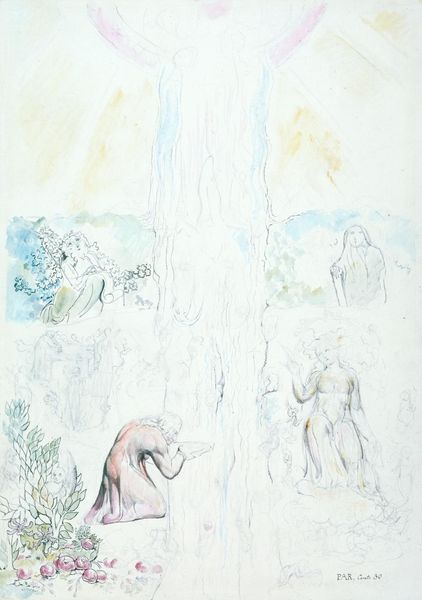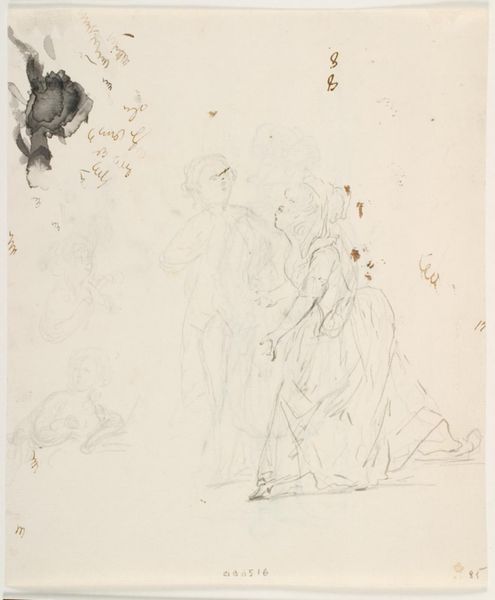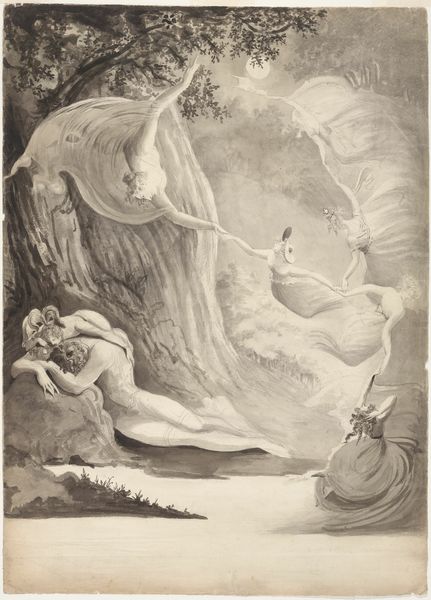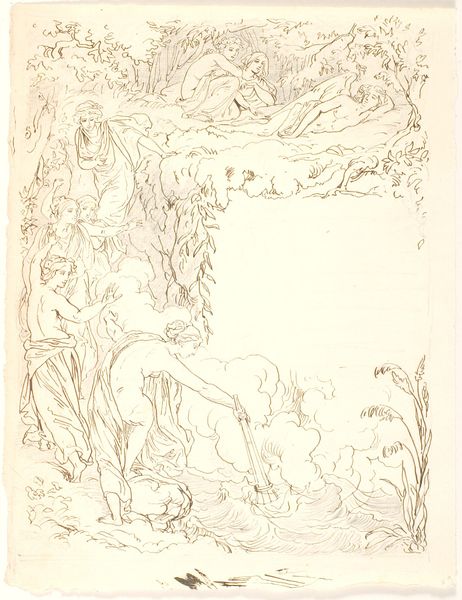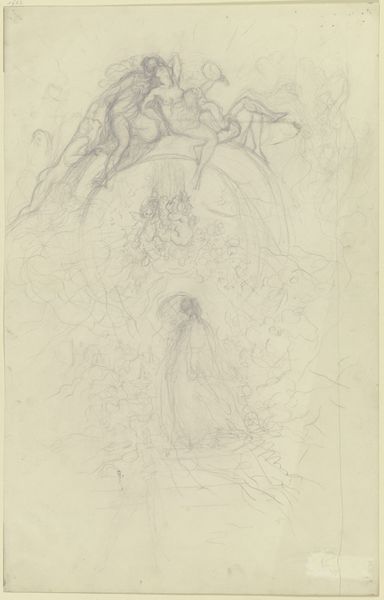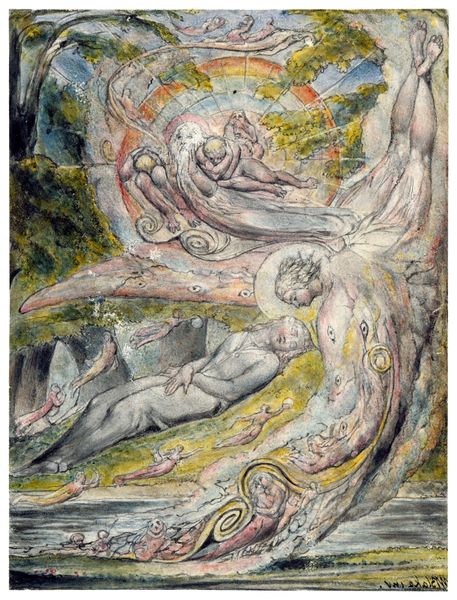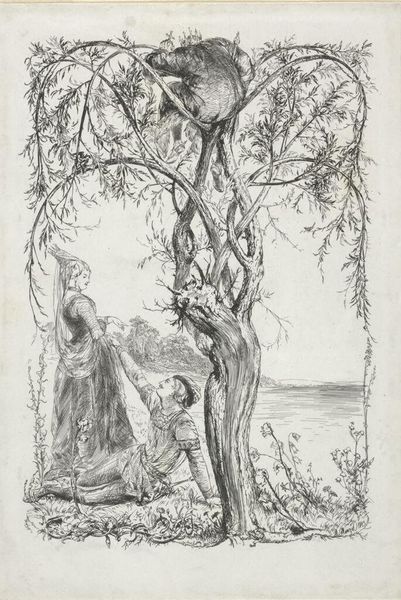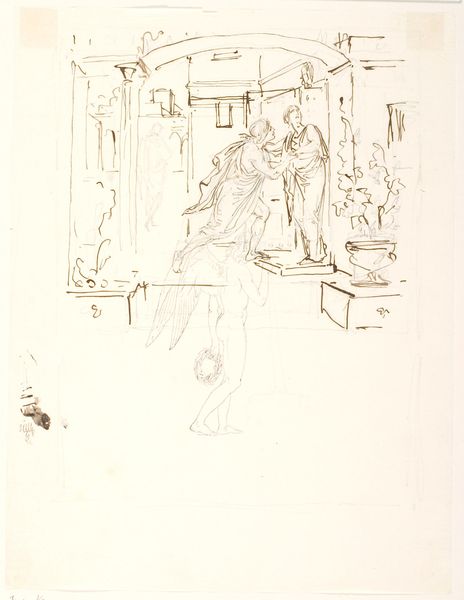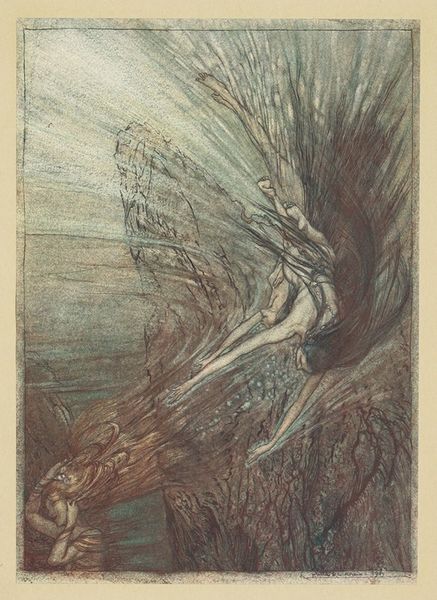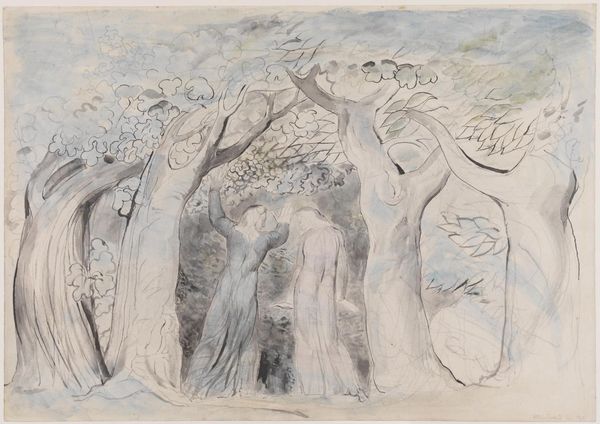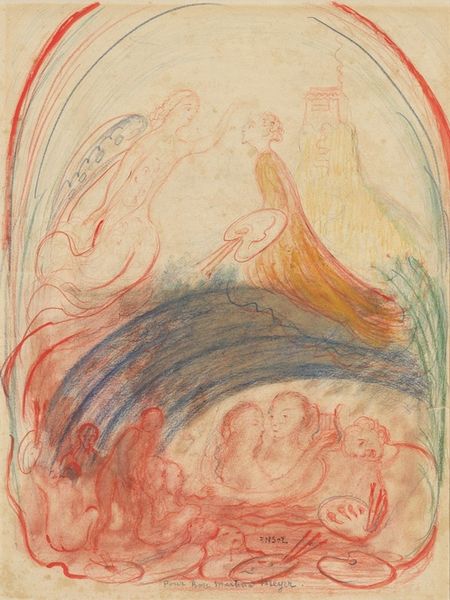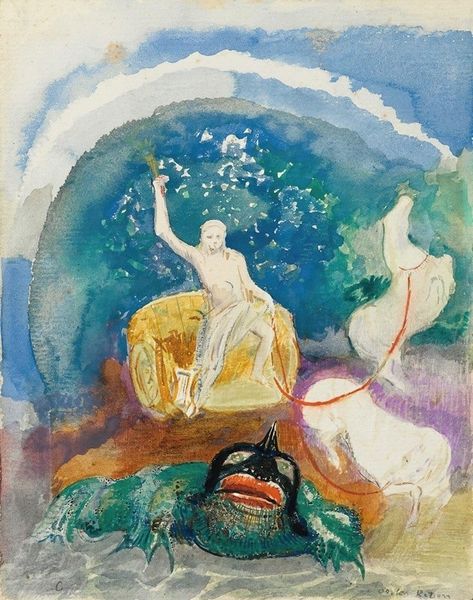
Dimensions: support: 528 x 371 mm
Copyright: CC-BY-NC-ND 4.0 DEED, Photo: Tate
Editor: This ethereal watercolor, "Dante in the Empyrean, Drinking at the River of Light," by William Blake, is fascinating. The figures almost dissolve into the light. What symbols stand out to you in this piece? Curator: The river itself is the primary symbol. Water, especially as light, represents purification and spiritual transformation, a recurring motif in many cultures. Dante's act of drinking is not merely quenching thirst, but an ingestion of divine knowledge. Editor: So, the light isn’t just visual; it’s also knowledge? Curator: Precisely. It's an echo of religious experiences, represented with visual metaphors, prompting us to remember. Editor: That's a powerful interpretation. I’ll definitely look at Blake's work differently now. Curator: These symbols help us connect with a deeper cultural and emotional history.
Comments
tatebritain 6 months ago
⋮
http://www.tate.org.uk/art/artworks/blake-dante-in-the-empyrean-drinking-at-the-river-of-light-n03370
Join the conversation
Join millions of artists and users on Artera today and experience the ultimate creative platform.
tatebritain 6 months ago
⋮
In this scene from The Divine Comedy the poet Dante has reached paradise, where he is met by his dead beloved, Beatrice. In this infinite space of light, love and joy, Dante drinks from a river of light. Beatrice sits on the lower right. Blake has invented the two figures in the upper half of the work. They might represent the spiritual forms of Art and Nature, residing in eternity. While The Divine Comedy clearly sparked Blake’s imagination, Dante’s beliefs—especially his emphasis on sin and punishment—didn’t sit easily with his own. Blake was critical of organised religion and its restrictions on spiritual life. Gallery label, June 2024
